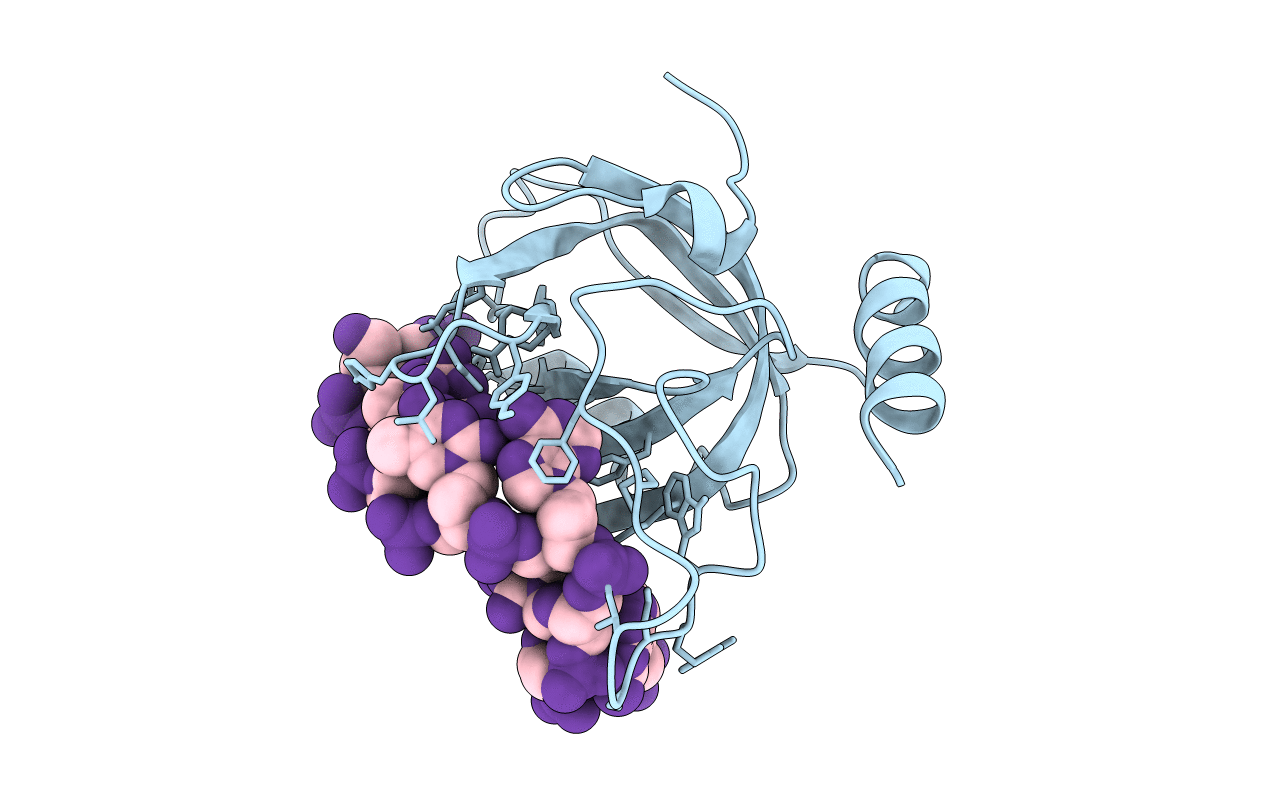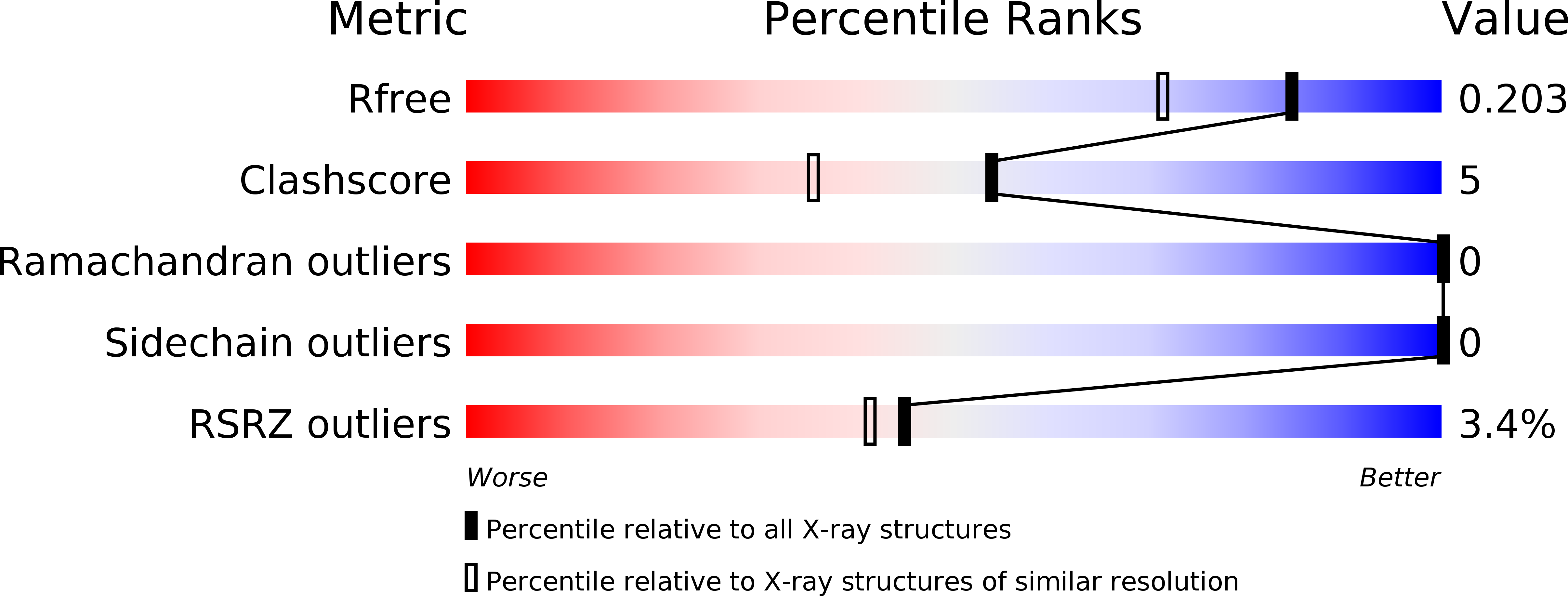
Deposition Date
2017-02-13
Release Date
2018-04-18
Last Version Date
2023-10-04
Entry Detail
PDB ID:
5USB
Keywords:
Title:
Crystal Structure of Schizosaccharomyces pombe Pot1pC bound to ssRNA/ssDNA chimera (rGGTTACGGT)
Biological Source:
Source Organism:
Schizosaccharomyces pombe (Taxon ID: 4896)
Host Organism:
Method Details:
Experimental Method:
Resolution:
1.62 Å
R-Value Free:
0.20
R-Value Work:
0.17
R-Value Observed:
0.17
Space Group:
P 21 21 21


